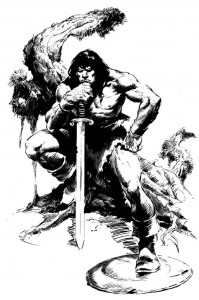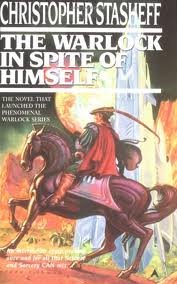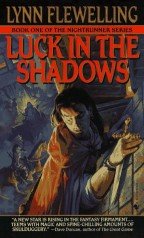
are you brave enough?
Recently I rode a cheesy amusement-park haunted house ride. Among its decades-old self-advertisements was, “
Are you brave enough for the Dark Ride?“. “Dark Ride” struck me as good phrase. I wondered what it might mean in my D&D campaign.
The first thing I thought is that it was an expression for death, as in “I thought we were going to take the Dark Ride that time for sure!” But the problem with expressions is that NPCs are the only ones who say them, and only when the DM has prepared NPC dialogue ahead of time, which I tend not to do.
Then I thought that horses riding through dark tunnels might be pretty harrowing. Your average horse is not going to gallop around in a tunnel, so maybe there is some breed of underground horse with darkvision. Maybe they’re used for transportation in the Underdark. Sounds like the beginnings of a fast-travel system.
The Dark Ride, though, doesn’t sound like a generic term for mounted travel in the Underdark. It sounds like a specific experience – and a dangerous one. Let’s say that there is a series of tunnels. At the end of each tunnel is a stable. When you need to travel really quickly, you mount a dark horse and gallop through ancient tunnels that have never seen light. The problem is, there are things that live in the tunnels: things that eat the horses, and their riders. If these creatures chase you, it’s a mad marathon race for safety: the Dark Ride.
What are these creatures? No one has ever seen them, because it’s pitch black in the tunnels and any light blinds and paralyzes the horses. But the creatures are audible. An encounter with the tunnel creatures will probably be a skill challenge, not a combat, and it will be conducted with non-visual cues: “The shrieking is getting louder, they sound like they are right behind you.” “The rotting smell is getting stronger.” “You can feel your horse is close to blind panic.” “You hear a horse scream behind you, and a series of cracking sounds. The horse’s scream goes on and on.”
This tunnel system doesn’t seem like something that belongs in the Underdark, but it actually seems like it could be a good fit for the Feydark. The Feydark, the Feywild mirror of the Underdark, is a 4e invention that, until now, never inspired in me a glimmer of interest. But it might actually work as a scene of undefined horror from which you can only run. Also, the blind, skill-challenge-based travel of the Dark Ride fits in with my idea that travel through Fairyland is not something that you can map.
Who takes the risks of the Dark Ride? Eladrin messengers, I suppose, who are willing to hazard their lives to get somewhere in a few hours, rather than deal with the unpredictability of conventional fey travel. Even the great lords of the fey shun the Dark Ride. I have a feeling, though, that if they have to be, the fey lords might be a match for the creatures. Therefore, let’s say that a combat encounter with the monsters of the Dark Ride might be high-paragon level. The skill challenge of escaping the riders, however, is suitable for any level.
Rules for the Dark Ride
Every fey lord has an access point to the Dark Tunnels, and most have a stables. The stables are behind great metal gates, and are perfectly safe. Once you enter the Dark Tunnels, and the gates close behind you, though, you are in danger of being discovered by the creatures of the tunnels.
DARK HORSES:
Dark horses hate light, and if they see any, they are immobilized (save ends). They travel incredibly quickly. Their exact movement rate is not relevant, but they can get anywhere in the world in less than a day.
CREATURES OF THE TUNNELS:
The creatures of the tunnels can smell horses, and have a pretty good chance of finding travelers. Make a saving throw; on a success, the PCs get to their destination without incident. On a failure, the creatures begin to pursue the party.
THE DARK RIDE:
If creatures find the party, run a level-appropriate skill challenge to escape them. Dungeoneering, finding shortcuts to the destination, will provide successes; Nature or Insight can be used to calm and control the horses; Perception can be used to give a bonus to the next Dungeoneering check; a group Athletics check can speed the horses; and one success can be granted without a roll if a PC tries a clever idea.
On a success, the PCs get to their destination, the gates open for them, and bang shut before the creatures can follow them.
On a failure, the PCs will find themselves in an awkward situation. They probably can’t fight the creatures; they will have a followup skill challenge to escape while the horses are being eaten. If they succeed, they will be able to escape, days later and with a significant loss of resources and healing surges, possibly in the wrong Fey court.
If the party fails the second skill challenge, they will have to face a very difficult fight, the object of which should be to escape rather than succeed.












